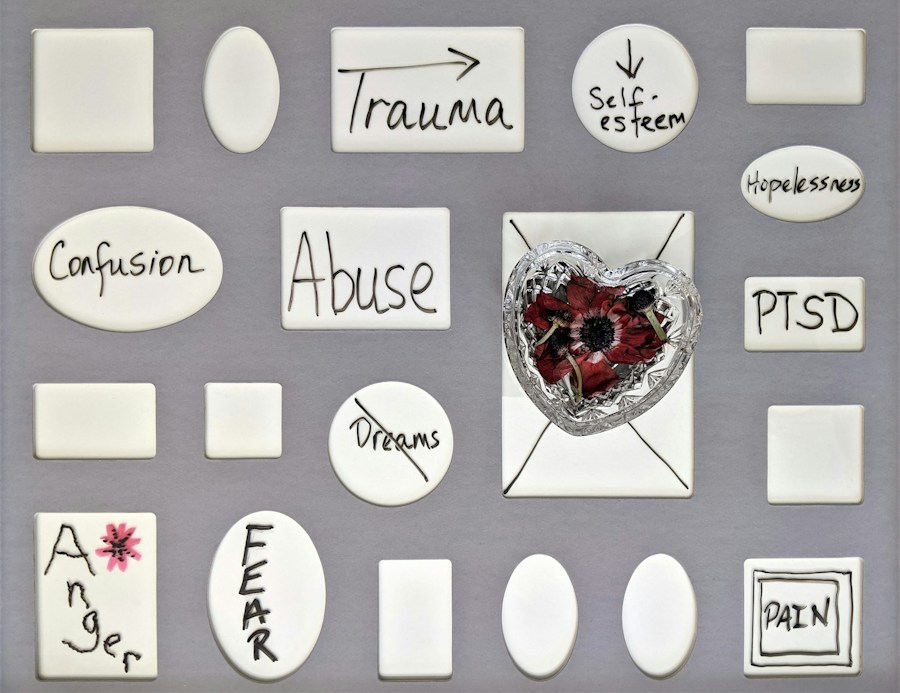Trauma bonding is a complex psychological phenomenon that occurs in abusive relationships, particularly those involving narcissistic individuals. It is a strong emotional attachment that forms between the victim and the abuser, often as a result of the intense and unpredictable nature of the abuse. Unlike regular bonding, which is based on trust, mutual respect, and shared experiences, trauma bonding is rooted in fear, manipulation, and control.
Understanding trauma bonding is crucial because it helps explain why victims of abuse often struggle to leave their abusive relationships. Despite the harm inflicted upon them, victims may feel a deep emotional connection to their abusers and may even defend or protect them. This can be confusing for both the victim and those around them, making it essential to shed light on this complex dynamic.
The Role of a Narcissist in Trauma Bonding
Narcissists are individuals who have an inflated sense of self-importance, a constant need for admiration, and a lack of empathy for others. They are skilled manipulators who use various tactics to control and dominate their victims. These tactics can include gaslighting (manipulating someone into questioning their own reality), love bombing (overwhelming the victim with affection and attention), and devaluation (making the victim feel worthless).
The impact of narcissistic abuse on trauma bonding is significant. The constant cycle of idealization and devaluation creates an addictive pattern for the victim. The intermittent reinforcement of love and affection followed by cruelty and neglect creates a sense of dependency on the abuser. This dependency, combined with the fear of abandonment or retaliation, makes it incredibly challenging for victims to break free from the trauma bond.
The Psychology of Trauma Bonding: Why It Happens
Trauma bonding occurs due to the brain’s response to trauma. When someone experiences intense fear or threat, their brain releases stress hormones such as cortisol and adrenaline. These hormones activate the body’s fight-or-flight response, preparing it to either confront the threat or flee from it. However, in cases of abuse, the victim is often unable to fight back or escape, leading to a freeze response.
The freeze response is a survival mechanism that allows the victim to dissociate from the pain and fear of the abuse. This dissociation can create a sense of numbness and detachment, making it easier for the victim to endure the abuse. Over time, this dissociation becomes associated with the abuser, leading to a trauma bond. The victim may come to believe that their survival depends on staying connected to the abuser, further reinforcing the bond.
Attachment also plays a significant role in trauma bonding. Humans have an innate need for connection and attachment, particularly in times of distress. When someone experiences abuse, their attachment system becomes activated, seeking safety and comfort. In cases of trauma bonding, the abuser becomes both the source of fear and the source of relief from that fear. This creates a powerful attachment bond that can be challenging to break.
Signs and Symptoms of Trauma Bonding with a Narcissist
Recognizing trauma bonding can be difficult because it often involves conflicting emotions and behaviors. However, there are several signs and symptoms that may indicate a trauma bond with a narcissist:
Emotional and behavioral symptoms:
– Feeling intense love and loyalty towards the abuser despite their abusive behavior
– Rationalizing or justifying the abuser’s actions
– Feeling trapped or unable to leave the relationship
– Isolating oneself from friends and family
– Experiencing anxiety or fear when thinking about leaving the abuser
Physical symptoms:
– Chronic stress-related health issues such as headaches, digestive problems, or insomnia
– Changes in appetite or weight loss/gain
– Frequent illnesses due to weakened immune system
– Physical symptoms of anxiety such as rapid heartbeat or shortness of breath
Recognizing these signs and symptoms is crucial for understanding the dynamics of trauma bonding and seeking help.
The Cycle of Abuse in Trauma Bonding
Trauma bonding often occurs within a cycle of abuse, which consists of three phases: tension-building, explosion, and honeymoon. In the tension-building phase, the victim may feel a sense of unease or walking on eggshells around the abuser. The abuser may become increasingly critical, controlling, or verbally abusive during this phase. The victim may try to appease the abuser to prevent further escalation.
The explosion phase is characterized by an intense outburst of abuse from the narcissist. This can include physical, emotional, or verbal abuse. The victim may feel overwhelmed, frightened, and powerless during this phase. The explosion phase is often followed by a honeymoon phase, where the abuser apologizes, shows remorse, and may shower the victim with affection and attention. This phase can create a sense of hope and relief for the victim.
The cycle of abuse reinforces the trauma bond by creating a pattern of highs and lows. The victim becomes conditioned to believe that the abuse is their fault and that they can regain the love and affection of the abuser if they just try harder or change themselves. This cycle can be incredibly damaging to the victim’s mental health, leading to feelings of confusion, self-blame, and low self-esteem.
The Emotional and Physical Toll of Trauma Bonding
Trauma bonding takes a significant toll on both the emotional and physical well-being of the victim. Emotionally, victims may experience symptoms of anxiety, depression, post-traumatic stress disorder (PTSD), and complex trauma. They may struggle with feelings of worthlessness, shame, and guilt. The constant fear and uncertainty in the relationship can lead to hypervigilance and a heightened state of arousal.
Trauma bonding also affects the victim’s ability to form healthy relationships with others. The intense emotional connection to the abuser can make it challenging to trust others and establish boundaries. Victims may also struggle with self-worth and self-esteem, believing that they are unworthy of love and respect.
Addressing trauma bonding is crucial for overall well-being. It requires a comprehensive approach that includes therapy, support groups, and self-care practices.
Breaking Free from Trauma Bonding: The Recovery Process
Breaking free from trauma bonding is a challenging process that requires time, support, and self-reflection. Here are some steps to take to break the trauma bond:
1. Recognize the abuse: Acknowledge that the relationship is abusive and that you deserve better.
2. Seek support: Reach out to trusted friends, family members, or professionals who can provide emotional support and guidance.
3. Set boundaries: Establish clear boundaries with the abuser and enforce them. This may involve limiting contact or cutting off all communication.
4. Focus on self-care: Prioritize self-care activities that promote healing and well-being. This can include exercise, meditation, journaling, or engaging in hobbies.
5. Challenge negative beliefs: Identify and challenge the negative beliefs about yourself that were reinforced by the abuser. Replace them with positive affirmations and self-compassion.
6. Educate yourself: Learn about trauma bonding, narcissistic abuse, and healthy relationships. This knowledge will empower you to recognize red flags in future relationships.
The Importance of Seeking Professional Help
Seeking professional help is crucial for recovering from trauma bonding. Therapists who specialize in trauma and abuse can provide a safe space for victims to process their experiences, heal from the trauma, and develop healthy coping strategies.
Therapy can help victims understand the dynamics of trauma bonding, identify patterns of abuse, and develop strategies for breaking free from the trauma bond. Therapists can also provide tools for rebuilding self-esteem, setting boundaries, and establishing healthy relationships.
Support groups can also be beneficial for trauma bonding recovery. Connecting with others who have experienced similar abuse can provide validation, support, and a sense of community. Support groups can also offer practical advice and strategies for healing and moving forward.
Preventing Trauma Bonding: Red Flags to Look Out For
Preventing trauma bonding starts with recognizing the red flags of a narcissistic relationship. Some warning signs include:
– Excessive charm and flattery in the early stages of the relationship
– A sense of entitlement or superiority
– Lack of empathy or disregard for others’ feelings
– Controlling behavior or attempts to isolate you from friends and family
– Frequent criticism or belittling
– Manipulative tactics such as gaslighting or love bombing
Trusting your instincts is crucial. If something feels off or too good to be true, it’s essential to take a step back and evaluate the relationship.
Healing from Trauma Bonding: Self-Care Strategies
Self-care is an essential aspect of healing from trauma bonding. Here are some self-care practices that can promote healing:
1. Establish a routine: Create a daily routine that includes activities that bring you joy and promote well-being.
2. Practice mindfulness: Engage in mindfulness exercises such as meditation or deep breathing to help ground yourself in the present moment.
3. Engage in creative outlets: Explore creative outlets such as art, writing, or music to express your emotions and process your experiences.
4. Prioritize physical health: Take care of your physical health by engaging in regular exercise, eating nutritious meals, and getting enough sleep.
5. Seek joy: Engage in activities that bring you joy and make you feel good about yourself. This can include spending time with loved ones, pursuing hobbies, or engaging in nature.
6. Practice self-compassion: Be kind and gentle with yourself. Acknowledge that healing takes time and that it’s okay to prioritize your needs and well-being.
Moving Forward from Trauma Bonding with a Narcissist
Moving forward from trauma bonding with a narcissist is a challenging but necessary journey towards healing and recovery. By understanding the dynamics of trauma bonding, recognizing the signs and symptoms, and seeking professional help, victims can break free from the cycle of abuse and rebuild their lives.
It’s important to acknowledge the trauma bond and the impact it has had on your life. By taking steps towards healing and recovery, you can create a brighter future free from trauma bonding. Remember that you are not alone, and there is hope for a life filled with healthy relationships, self-love, and happiness.


